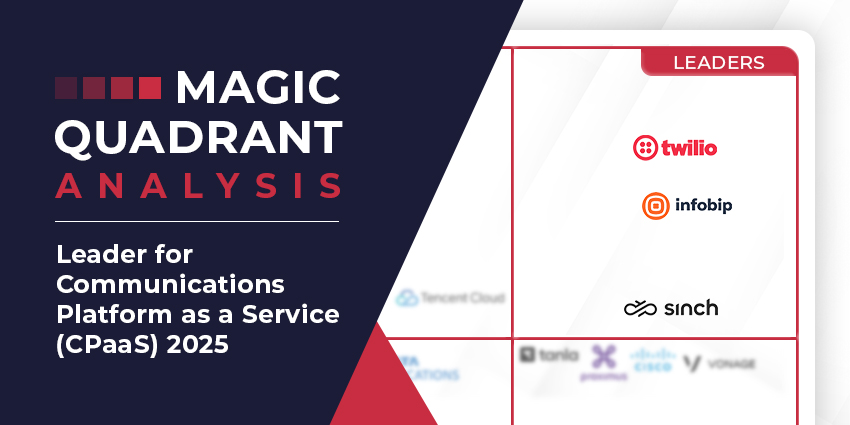In the age of digital transformation, where communication services are becoming ever more diverse, it’s no surprise that billing operations are becoming increasingly more complex and challenging to manage. Consequently, the demand for an efficient and comprehensive solution that simplifies the billing process is higher than ever before.
Since the earliest days of trade, billing has always had an important role to play in the business process and, aside from just bringing money into the company, it is essential for maintaining a positive relationship with the customer by keeping them up to date on what services they have used, when they have used them and why.
Taking this into consideration, a failure to address these areas with consistency and precision puts that customer experience in jeopardy and, when you take into account that customer experience (CX) will overtake price and product as the key brand differentiator by 2020, the risks of substandard billing processes are clear.
So, what is the solution? Well, given that the telecom billing and revenue management market is forecasted to grow from $7.80 billion in 2014 to $11.78 billion by 2019 (at a CAGR of 8.6%), we can assume that more and more service providers and channel resellers will look to telecom billing platforms to improve their billing processes – but what exactly are these and how can they help telecoms and ICT providers achieve more?
What is a telecoms billing platform?
In its simplest form, a telecom billing platform is a software that uses call data records (CDRs; records created each time a call, text message or other type of transaction crosses over a communications network) to measure each customer’s network usage. The billing platform will then rate usage based on customer tariffs and generate each customer’s bill accordingly.
As the communications market has matured, so to have billing platforms. They have evolved to deliver service providers and resellers with powerful, yet simplified solutions for streamlining the billing process as a whole, helping to maximise efficiency and deliver a great customer experience.
Advanced solutions such as the market leading aBILLity™ platform, available from Union Street Technologies, will manage everything from revenue assurance checks to the collation of service charges to invoice deployment. Increasingly, billing platforms are going beyond the billing process to deliver solutions for provisioning services, service management, tackling toll fraud and everything in between.
Key Features
- Automated Billing
- Billing Reports
- Online Billing Portal
- Revenue Assurance
- Fraud Protection
- CRM Software Integration
- Accounting Software Integration
- WLR 3 Integration
What are the benefits?
Rather than using multiple applications, spreadsheets and so on to complete billing runs, one of the major advantages of investing in a telecoms billing platform is that it unifies the billing process into one, easy-to-use application. This can drastically reduce errors and protect both service providers, resellers and end users from the multitude of damages that can occur as a result of oversights and mistakes. Telecoms billing platforms automatically carry out many processes on behalf of the financial department so that all charges can be added up accurately without fault on a consistent basis.
Moreover, as well as ensuring that bills are generated with pinpoint accuracy every time, telecoms billing platforms also help relieve the strain placed on smaller financial departments by carrying out the bulk of the legwork and empowering businesses to accomplish much more with less. As a result, a billing platform is a must have solution for any business that wants to deliver a premium, enterprise-grade billing service.
From a billing management perspective, by incorporating advanced revenue assurance functionalities, telecoms billing platforms can, to varying degrees of effectiveness, help service providers and resellers quickly analyse the value of their products and determine whether or not services are being sold at a loss or if their suppliers are billing them at the correct rate.
Furthermore, to help meet the demands of the modern customer living in the digital age, some telecoms billing platform suppliers also include online billing management portals that enable customers to access their billing information over the web via their laptop or smartphone at any time and in any location of their choosing. As well as drastically improving the customer experience by enabling them to quickly access billing information in a way that is most convenient to them, this feature can also help businesses rapidly cut down on distribution costs.
From a security perspective, telecoms billing platforms often provide cutting-edge fraud management software that can be used to detect and counter fraudulent activity, stopping it in its tracks before it has the chance to do serious damage. Using advanced algorithms to flag suspicious calling patterns and inconsistent charge rates in CDRs, telecoms billing platforms can give financial departments an early warning system that enables them to curtail theft and alert customers to the situation.
To add further efficiency to the billing process, some telecoms billing platforms offer full back-end integration with CRM and accounting software boosting productivity and efficiency by ensuring that the number of duplicated entries are kept to a minimum. With this feature, it’s much easier for service providers and resellers to stay organised and provide personalised service to their clients.
In addition, some telecoms billing platforms incorporate, or can integrate with, WLR3 (Wholesale Line Rental 3) software. WLR3 software offers service providers and resellers complete control over their customers’ WLR assets by enabling them to interface with BT Openreach’s Equivalence Management Platform. This in turn allows them to directly order services, view site information, book engineer appointments, reserve numbers, manage faults and more.
Integrating WLR3 with the billing platform can deliver significant business benefits in terms of reduced data entry, faster order processing, extra validation, a reduction in errors, misbilling and revenue loss.
Who needs it?
The use of telecom billing platforms has become ubiquitous in the communications channel for good reason. Very few telecoms professionals would deny the effectiveness of a billing platform when it comes to customer management and ensuring profitability. Most would consider them as essential to both the smooth operating and the scalability of any business that supplies communication services.
With billing software, financial teams are given a powerful tool that automates time-consuming processes and gives deep insights into each customer account to ensure that they run with enterprise-grade efficiency. It enables them to check that everything is correctly billed at the right tariffs so that revenue is not lost and customers are not overcharged. This can greatly improve profits whilst reducing disputes and base churn.
As time progresses, it is likely that emerging technologies will continue to disrupt the communications market. Customer expectations will evolve and change accordingly. The pressure is on service providers and resellers to respond agilely to these changes by understanding how they will impact their business model and by delivering forward-thinking solutions that are competitively priced.
Choosing a billing platform that’s backed by a reputable vendor which continually invests in and develops its software to manage and bill emerging technologies, is one way communication providers can future proof their business and stay ahead of the curve.
UC Today Billing Series
Over the next few months Union Street shall be sponsoring our biweekly series on Telecoms & ICT Billing software where we discuss what what billing platforms are and the many ways in which businesses can benefit from them.
In the next article, we shall be discussing what things businesses should look for when selecting their billing platform vendor to ensure that each of their individual requirements are met.







